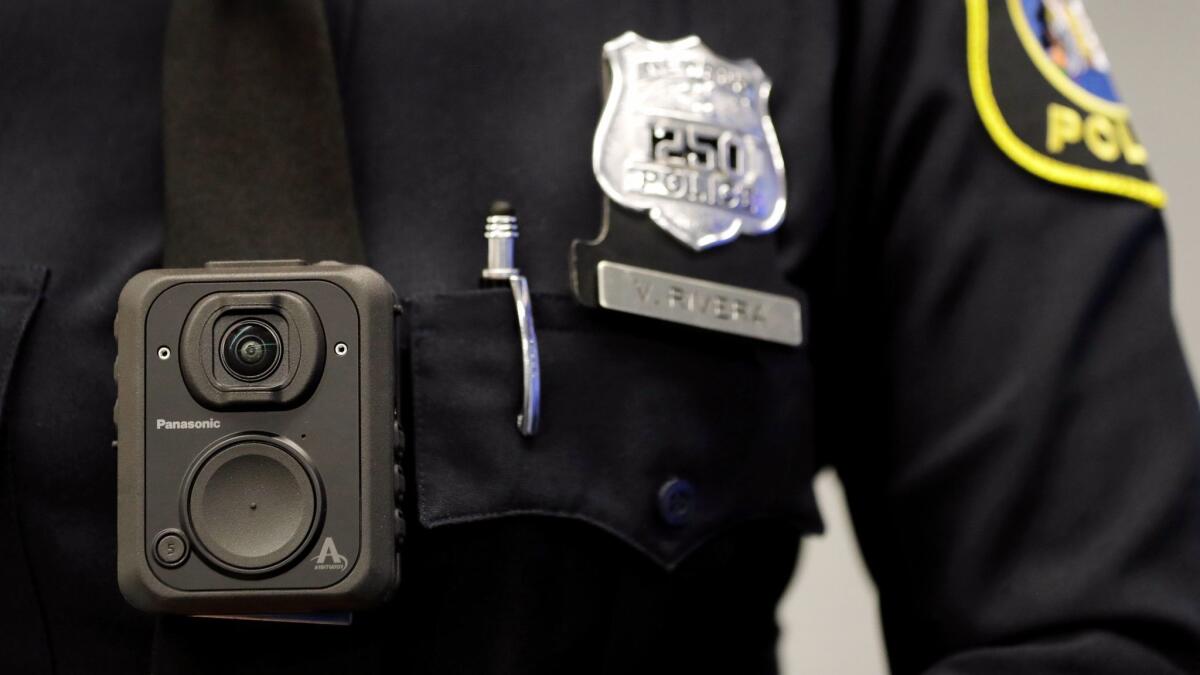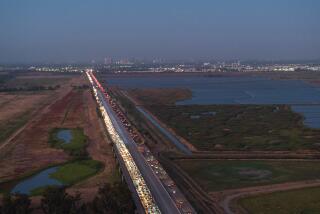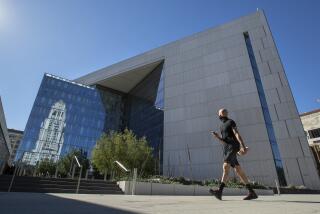Editorial: What’s the appropriate time to release police body camera videos? Right now

- Share via
Like audio recordings of 911 emergency calls, video recordings from police body cameras are public records that can and should be disclosed to the public. That’s the easy part.
It gets complicated because in mandating disclosure, California law also allows footage to be edited and release to be delayed to protect individual privacy and give police the leeway they need to conduct investigations and protect witnesses. The Los Angeles Police Department decides for itself when to release body cam video of critical incidents, such as police use of force or encounters that end in death. The department’s response to a request in such circumstances is generally “no” — no release until the investigation is over, no matter how long that may take.
It’s a policy that undermines the spirit of state public records laws even if it complies with the letter. It’s a policy that works against the very reason for outfitting officers with cameras in the first place: to promote transparency and accountability. It’s a policy that feeds public suspicion that police have something to hide. It’s a policy that must change.
The Police Commission — the LAPD’s civilian oversight body — is conducting a welcome review of the department’s video release policy and is due in coming days or weeks to present its recommendations. Here’s ours: Release body cam video of critical incidents, promptly and completely, on request.
The public employs police to protect us from crime, not to decide which images we can responsibly handle.
It is the essence of a free and democratic society that public officials work for the citizens, who have the right and ought to have the means to monitor their employees’ conduct in order to hold them accountable for their performance. That’s not less true of armed and uniformed officials who do the public’s most sensitive and dangerous work; to the contrary, it is even truer. In an era in which police have come under increasing criticism for their tactics — and at a time in which police unions continue to use their lobbying clout to restrict public access to information about individual officers’ performance — it is more important than ever that records of police actions are promptly released to the public.
The arguments against such release are well-rehearsed. Dist. Atty. Jackie Lacey, for example, contends that video of controversial police encounters should not be released until her office has introduced it in court as evidence or decided not to bring criminal charges. Earlier release, she argues, could taint a jury pool.
But courts do not require jurors who are so detached from civic life and current events that they have no knowledge of alleged crimes and have neither seen nor heard anything that might be admitted into evidence. The jury system requires quite the opposite: jurors who are engaged and aware yet able to keep open minds as they sift through evidence. Videotape of the brutal 1991 beating of Rodney King (captured by a civilian bystander at a time when police body cameras were virtually unknown) was seen around the world many millions of times but did not prevent the seating of a jury that largely acquitted the accused officers. In the same way, bystander video of controversial police incidents has routinely gone viral and set off a storm of angry online commentary about what viewers believe they saw, occasionally accompanied by contentious street protests. But that hasn’t stopped courts from collecting 12 citizens who can set aside any earlier conclusions, hear attorneys and experts give some context to the images and weigh the complete body of evidence.
Likewise, the public at large must be trusted to be able to put controversial video into context. We employ police to protect us from crime, not to decide which images we can responsibly handle. Nor is it acceptable for police to release videos that support their version of an incident — as was the case a year ago with security camera video of Carnell Snell Jr. with a handgun, shortly before he was killed by LAPD officers — while declining release in other cases.
State law gives police sufficient discretion to edit or delay video in order to identify or protect witnesses, but withholding recordings should not be the department’s default or blanket policy. Other departments are recognizing the futility, as well as the bad policy, of sitting on video (for example, Salt Lake City last week announced a policy of releasing video within 10 days). Absent a compelling and publicly explained need in a specific case, the LAPD, too, should release video of critical incidents swiftly.
Follow the Opinion section on Twitter @latimesopinion and Facebook
More to Read
A cure for the common opinion
Get thought-provoking perspectives with our weekly newsletter.
You may occasionally receive promotional content from the Los Angeles Times.










